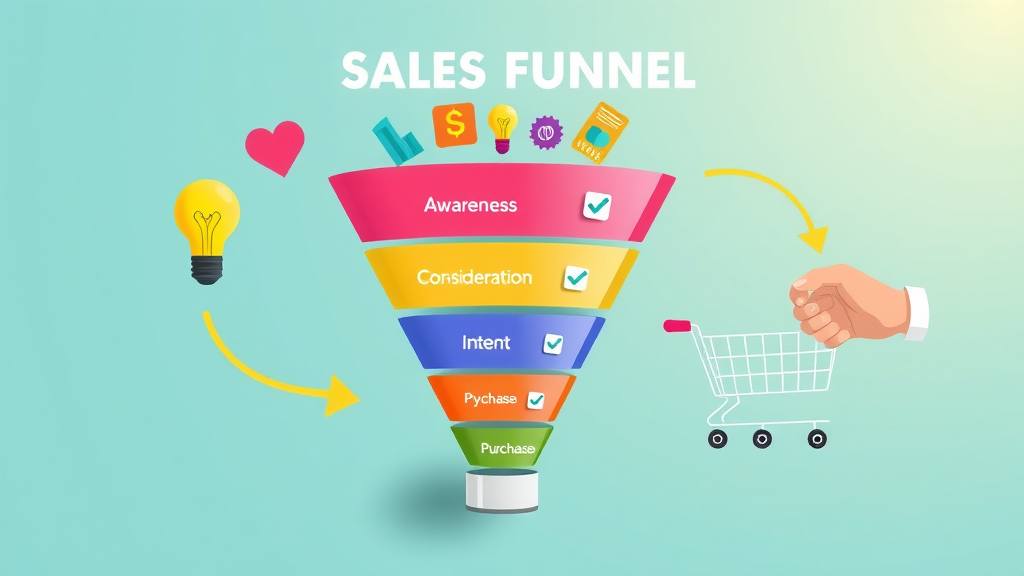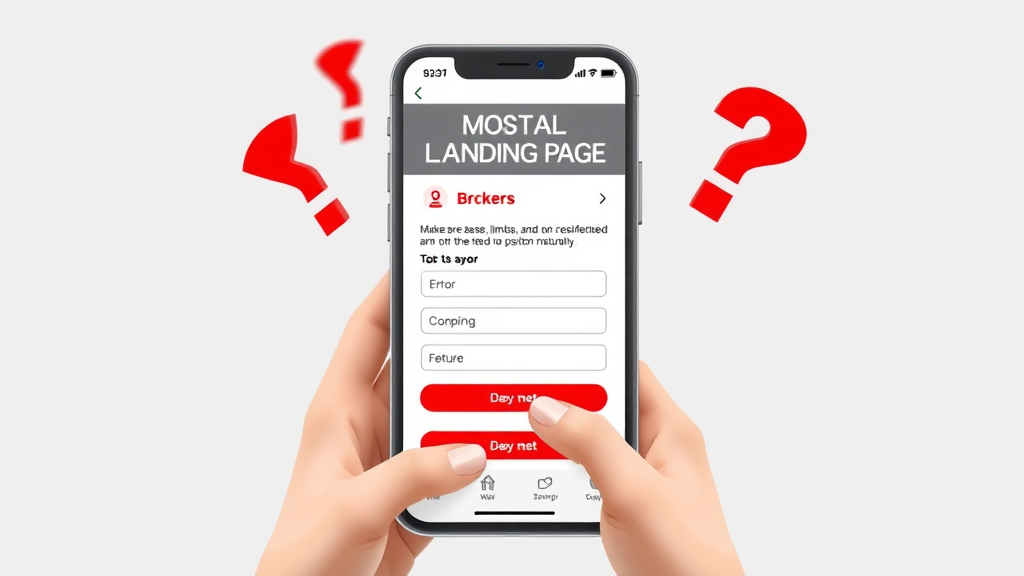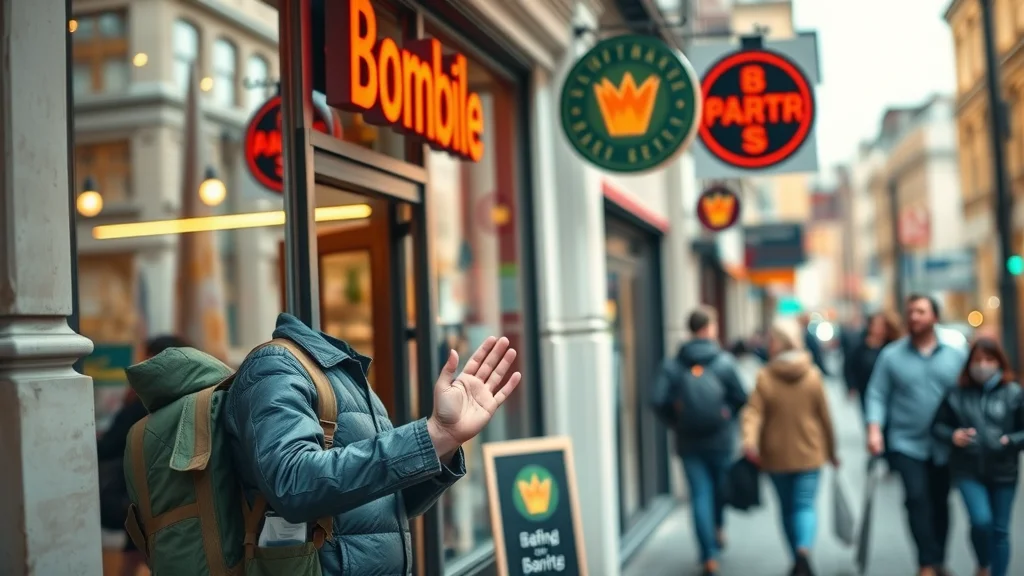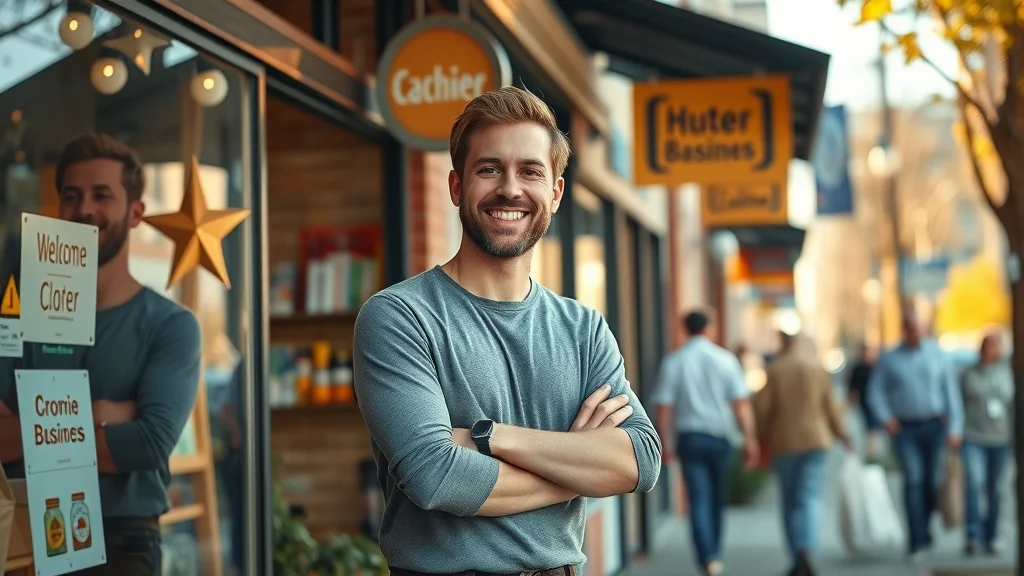Did you know that over 79% of marketing leads never convert into sales due to overlooked sales funnel inefficiencies? This eye-opening statistic reveals a hidden revenue opportunity lurking in nearly every business. If your sales funnel leaks prospects at critical junctures—or if you're not consistently converting potential customers into loyal clients—you're not alone. Fortunately, mastering sales funnel optimization empowers you to patch these leaks, elevate your conversion rates, and ultimately boost your bottom line. In this comprehensive guide, you'll discover the practical techniques, proven strategies, and real-world success stories that will transform your marketing funnel into a revenue-generating engine.

- Did you know that over 79% of marketing leads never convert into sales due to funnel inefficiencies? Discover how sales funnel optimization can directly boost your bottom line.
Unveiling the Power of Sales Funnel Optimization: Why Most Funnels Leak Profits
Every digital business depends on a streamlined conversion funnel to turn prospects into paying customers. Yet, most sales funnels suffer from hidden leakages—places where potential customers slip away rather than moving to the next funnel stage. This means lost revenue, wasted marketing efforts , and missed opportunities for sustainable growth. By leveraging funnel optimization techniques, businesses can identify where leads drop off—whether at a confusing landing page , a weak call-to-action, or an overlooked follow-up email. Fixing these leaks isn’t just about plugging holes; it’s about fundamentally understanding every stage of the funnel and what motivates prospective customers to convert.
A powerful sales funnel doesn’t happen by accident. It requires a deliberate focus on data, continuous improvement, and a customer-focused approach to every single funnel stage . By shining a spotlight on the precise points where conversion rates falter, companies can rapidly experiment, iterate, and capture more value from their marketing funnel. When you optimize with intention, you can boost your revenue dramatically—even with the same traffic. The secret: Consistent testing, optimization, and relentless pursuit of a seamless customer journey .
Understanding Sales Funnel Optimization: Definitions and Core Concepts
- Definition of sales funnel optimization: Sales funnel optimization is the process of analyzing and improving each stage of the funnel to maximize conversions and minimize drop-offs. It’s essential for scaling your business and maximizing return from every marketing dollar.
- Funnel optimization is the backbone that links the conversion funnel , sales funnel , and marketing funnel . While these terms often overlap, their combined power lies in guiding potential customers from their first brand interaction to the point of sale and long-term loyalty.
- Clarify these vital concepts:
- Conversion rate: The percentage of users advancing to the next funnel stage or completing a desired action.
- Funnel stage: Distinct steps—like Awareness, Interest, Consideration, Intent, Purchase—through which customers move.
- Customer journey: The holistic experience and touchpoints a prospective customer encounters.
- Landing page: A focused web page designed to capture leads or entice conversions at a key funnel stage.
What You'll Gain from Mastering Sales Funnel Optimization
- Actionable techniques for identifying and patching funnel leaks

- Insights on increasing conversion rates at every funnel stage
- Best practices for maximizing engagement with your target audience and potential customers
Mapping the Sales Funnel: Funnel Stages and Customer Journey Breakdown
Awareness to Decision: Key Stages in the Conversion Funnel
- Awareness, Interest, Consideration, Intent, Purchase — these are the classic stages of the marketing funnel. At each, your target audience has unique needs and expectations.
- Potential customers move through the marketing funnel in a flow: discovering your brand, expressing curiosity, evaluating your solution compared to others, signaling intent (like filling out a form or starting a free trial), and finally making their purchase decision.

Each stage of your conversion funnel deserves specific, targeted messaging and offers. At the awareness stage, for example, educational blog posts or social media content can drive interest. In the consideration or intent stages, case studies and lead magnets that directly address pain points can increase engagement and nudge potential customers forward.
Understanding Your Target Audience in Each Funnel Stage
- Knowing what resonates with your target audience is the heart of funnel optimization. Identify their pain points, desired outcomes, and the language that motivates action at each stage.
- Tailor your landing pages , emails, and social proof to mirror the journey your prospective customers are on. Whether they need education or reassurance, aligning your messaging to the right funnel stage can dramatically improve your conversion rates.
By carefully mapping your marketing funnel to your customer journey, you ensure that each step feels natural and intuitive for the user. This proactive segmentation and messaging not only boosts conversion rates but also increases the likelihood of transforming prospects into loyal customers.
Pinpointing Bottlenecks: Diagnosing Where Your Funnel Leaks Revenue
- Start with a step-by-step funnel audit. Analyze behavioral data—traffic patterns, bounce rates, click-throughs, and time spent—at each funnel stage. Heatmaps and session recordings can highlight drop-off points and bottlenecks.

- Red flags include: abnormally low conversion rates at a near-final funnel stage , a high bounce rate on your landing page , and disengaged potential or paying customers who stop progressing in the customer journey.
"A well-optimized sales funnel turns interested visitors into loyal advocates. Data is your greatest ally in finding leaks." — Leading Marketing Analyst
Combining quantitative analytics with qualitative customer feedback gives a comprehensive picture of what's working—and what's draining your marketing funnel. Updated funnel optimization strategies based on these insights can plug leaks and unlock higher returns fast.
Key Techniques for Effective Funnel Optimization
Enhancing Your Conversion Funnel with Compelling Landing Pages
- Build irresistible lead magnets for each funnel stage—from free eBooks and checklists during awareness, to product demos or free trials at consideration and intent stages.
- Simplify landing page design: Use clear value propositions, short forms to capture contact information, eye-catching but logical calls to action, and minimal distractions.

- Social proof—like testimonials, review badges, and certification logos—builds trust with potential customers swiftly, moving them further down the sales funnel.
The best landing pages are continuously refined based on user behavior and A/B test results. They address objections up-front and reward users with relevant content at each funnel stage .
Conversion Rate Optimization: Testing, Tools, and Continuous Improvement
- A/B testing is essential—experiment with headlines, offers, form fields, and CTAs across your marketing funnel to find what delivers the highest conversion rates.
- Harness tools like heatmaps, Google Analytics, and customer feedback surveys to assess how users interact across every funnel stage .

- Success lies in continuous improvement: Always apply your findings to keep refining your sales funnel optimization . Small tweaks—like a more relevant lead magnet or a clearer CTA—can yield significant conversion lifts over time.
Using Social Proof and Lead Magnets to Supercharge Your Sales Funnels
- Types of social proof: Customer testimonials, expert reviews, awards, certifications, and even social media engagement counts help nurture trust at every stage of the sales funnel.
- High-converting lead magnet ideas: Consider quizzes, free downloadable resources, webinars for the consideration phase, and special offers or exclusive free trials at the intent/purchase phases.

By strategically placing social proof and tailored lead magnets at each step, you address objections and comfort potential customers, increasing the likelihood of a completed sale.
Case Studies: Real-World Results from Advanced Sales Funnel Optimization
- Direct business impacts you can expect from ongoing funnel optimization include: skyrocketing revenue growth, a surge in qualified lead capture, and enhanced customer retention.

- Example: Company X implemented sales funnel optimization strategies—personalized landing pages, targeted lead magnets, and aggressive A/B testing—and increased their conversion rates by a staggering 42% in just six months.
| Technique | Advantages | When to Use |
|---|---|---|
| A/B Testing | Pinpoints winning elements, improves conversion rates | All funnel stages, especially landing pages |
| Personalization | Boosts engagement, resonates with target audience | Emails, product recommendations, content |
| Email Automation | Nurtures leads, increases retention, saves time | Follow-ups, remarketing, event-triggered sequences |
| Social Proof Integration | Builds trust and authority, reduces buyer hesitation | Landing pages, sign-up forms, checkout pages |
| Industry | Landing Page Conversion Rate | Email Click-to-Open Rate | Purchase Conversion Rate |
|---|---|---|---|
| Ecommerce | 3-5% | 10-15% | 1.5-2.8% |
| SaaS | 8-12% | 12-18% | 2.5-5.0% |
| Lead Gen | 10-22% | 18-26% | 2.0-4.5% |
| Education | 15-30% | 20-28% | 3.0-6.0% |
Integrating Email Marketing and Automation into Your Conversion Funnel
- Email marketing is vital for nurturing potential customers who aren't yet ready to buy. Smart segmentation and behavior-triggered sequences keep your brand top-of-mind and nudge prospects further down the funnel.

- Automated email workflows—like cart abandonment campaigns, lead nurturing drip series, or remarketing to disengaged leads—are key to recapturing lost revenue and boosting conversion rates at every funnel stage.
Efficient automation ensures that no potential customer slips through the cracks, maximizing ROI from your marketing funnel.
Analyzing Metrics: Measuring Success in Sales Funnel Optimization
- Track conversion rate , user engagement, and customer journey progression at every funnel stage. KPIs like opt-in rate, time on page, and trial-to-paid conversion are powerful indicators of bottlenecks or healthy flow.
- Leverage analytics tools to uncover new optimization opportunities—segmenting data by funnel stage, device, or target audience. Consistency in measurement helps you iterate and improve your sales funnel optimization over time.

Actionable metrics guide you to refine your approach, ensuring your marketing funnel adapts to market changes and customer behavior.
People Also Ask: What is sales funnel optimisation?
- Sales funnel optimisation is the process of analyzing and improving each stage of the sales funnel to maximize conversions and reduce lead drop-off, combining insights from user behavior, marketing funnel strategies, and conversion funnel data.
People Also Ask: What are the 5 stages of the sales funnel?
- The five primary stages of the sales funnel are Awareness, Interest, Consideration, Intent, and Purchase. Each funnel stage represents a step in the customer journey from initial contact to final sale.
People Also Ask: What is a sales funnel strategy?
- A sales funnel strategy involves planning and executing tactics for guiding potential customers through the marketing funnel with targeted touchpoints, content, and calls to action designed for each funnel stage to boost conversion rates.
People Also Ask: How do you optimize the conversion funnel?
- You optimize the conversion funnel by identifying drop-off points, improving user experiences at landing pages, personalizing messaging for your target audience, applying A/B testing for various funnel stages, and using analytics for continuous improvement.
List of Common Sales Funnel Optimization Mistakes and How to Avoid Them
- Neglecting mobile responsiveness in landing pages
- Failing to analyze each funnel stage individually
- Ignoring customer journey feedback and lack of social proof
- Not segmenting potential customers and using generic messaging

- Relying on outdated lead magnets and non-optimized call-to-actions
Avoid these pitfalls by regularly auditing each funnel stage, gathering direct customer feedback, and reviewing analytics to find and fix friction points in your conversion funnel.
Expert Insights: Quotes on Sales Funnel Optimization
"You can't improve what you don't measure—funnel analytics are the heart of smart sales funnel optimization." — Digital Marketing Strategist
Comprehensive Sales Funnel Optimization FAQs
- What tools help with sales funnel optimization? Tools like Google Analytics, Hotjar, Unbounce (for landing pages), HubSpot, and drip email automation platforms empower you to test, analyze, and optimize every funnel stage with granular insights.
- How often should you review and optimize each funnel stage? It’s ideal to review your conversion funnel monthly or quarterly, depending on lead volume and campaign changes. Rapid A/B tests should run as soon as you spot issues or launch new offers.
- What's the fastest way to spot a funnel leak? Compare conversion rates between funnel stages in your analytics dashboard. Sudden drops in opt-ins, trial starts, or purchases signal funnel leaks demanding immediate attention.
- How do lead magnets impact the conversion funnel? Strategic lead magnets increase opt-ins, nurture trust, and accelerate movement from awareness to consideration. When aligned to user intent at each stage, they maximize funnel flow and conversions.
Next Steps: Implementing Sales Funnel Optimization for Sustainable Revenue Growth
- Review your current marketing funnel for drop-offs and friction points. Apply best practices described in this article—tailored landing pages, segmented lead magnets, social proof, and analytics-driven A/B testing—to unlock hidden revenue and sustainable business growth. Start optimizing today for measurable impact!
Sources
- HubSpot – https://www.hubspot.com/sales-funnel-management
- Hootsuite Blog – https://blog.hootsuite.com/marketing-funnel
- Neil Patel Blog – https://neilpatel.com/blog/sales-funnel-optimization/
- Optimizely – https://www.optimizely.com/optimization-glossary/conversion-funnel/
- WordStream – https://www.wordstream.com/landing-page-optimization
To further enhance your understanding of sales funnel optimization, consider exploring the following resources:
- “Sales Funnel Optimization: 10 Strategies for More Conversions” ( mountain.com )
This article provides actionable strategies to enhance each stage of your sales funnel, including tips on creating high-quality content, optimizing landing pages, and implementing compelling calls to action.
- “Sales Funnel Optimization: 9 Ways to Maximize Conversions” ( semrush.com )
This resource offers nine practical tactics to improve your sales funnel’s performance, such as identifying and segmenting your target audience, utilizing social proof, and crafting effective calls to action.
By delving into these resources, you’ll gain deeper insights and practical techniques to refine your sales funnel, ultimately boosting your conversion rates and revenue.
 Add Row
Add Row  Add
Add 










Write A Comment